Underrated Destination: Tunisia
Looking for somewhere really different to visit and somewhere that has a bit of everything. Why not consider a trip to Tunisia? In Tunisia you will find jaw dropping archaeological wonders, charming Berber villages, troglodyte houses, overnight camping in the Sahara and even some of the worlds most remote and spectacular dive sites. A trip to Tunisia also offers you a chance to get up close and personal with the abandoned sets from the Star Wars movie franchise, so why not set off on an adventure to find the droids no one is looking for?
Carthage
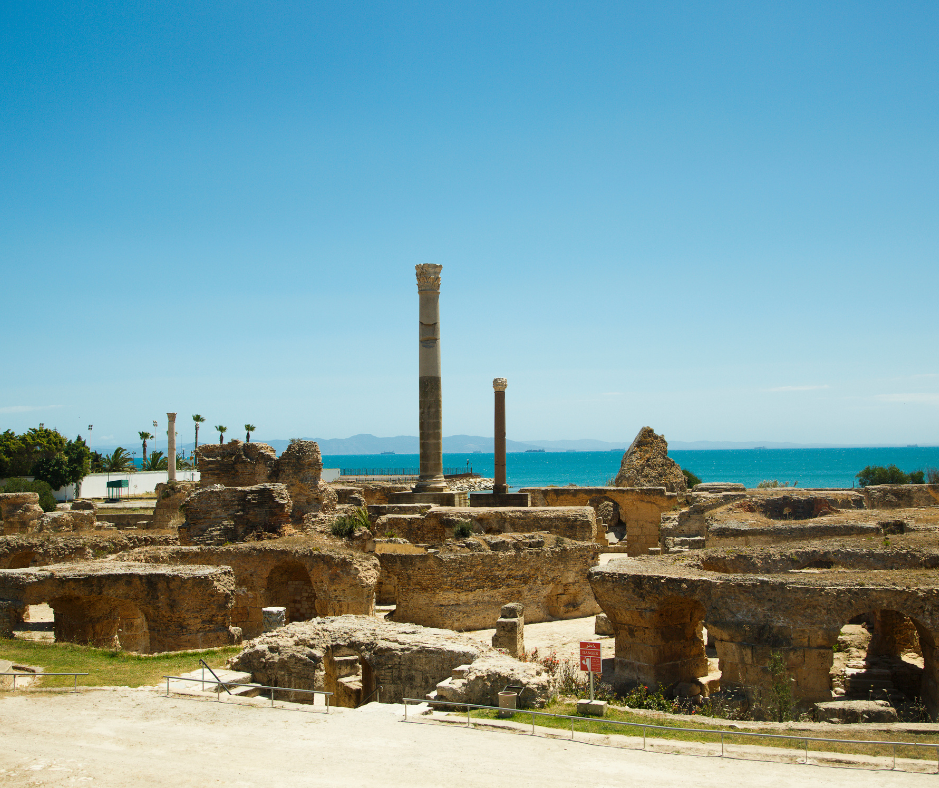
If Tunisia had a most famous sight, the archaeological site of Carthage would be it and no trip to Tunisia would be complete without a visit to the city legendarily established by Dido. In ancient times the city of Carthage, capital of the Punic Empire, was ruled over by Hannibal. Hannibal famously crossed the Alps and controlled one of the only forces capable of standing up to the armies of the Roman Empire. To combat this threat Carthage was famously ‘razed to the ground and the earth salted so that nothing would ever grow’ by the Roman general Scipio Africanus in the third Punic War. The city was re-established as Roman Carthage and became a major Roman city in the province of Africa.
Carthage is located on the eastern side of Lake Tunis on the shores of the Mediterranean, was an important trading hub and one of the most affluent cities of the ancient world. Carthage had an immense harbor and a sizable navy that enabled the Carthaginians to travel long distances at sea both for trade and for war. Carthage was first excavated in the 19th century and scattered evidence found by French archaeologists alludes to the possible practice of child sacrifice. The site is now on the UNESCO Word Heritage list and finds from the site can be seen at the nearby Bardo National Museum – one of the most important museums in the Mediterranean and another site not to be missed on a trip to Tunisia.
Djerba
The island of Djerba is located in the south of the country and is just a short flight from the capital Tunis. Djerba is also joined to the mainland by a sea bridge so if you’re down that way on your trip to Tunisia, you can drive across. Djerba is home to whitewashed stone houses and sandy beaches and is a popular coastal holiday for many locals. You could take a walk around the colourful markets or Houmt Souk, don’t miss the markets near Place de Algerie and Habib Bourguiba Street. Take a walk around the port and check out the piles of clay pots laying around used to catch octopus and then taste the proceeds of Djerba’s fresh fish industry in a nearby local restaurant.
Speaking of pottery, the island is famous for it! A trip to Guellala village where pottery has been made since the time of the Romans should not be missed – we recommend a sunset visit. Another great place for a walk is Djerbahood, a fantastic and unique street art project in the middle of the town of Hara Sghira Er Riadh. If you’re a Star Wars fan you shouldn’t miss Jarbah Ajim, which served at Mos Eisley Cantina ‘the wretched hive of scum and villainy’ where Luke Skywalker and Obi Wan Kenobi met Han Solo and Chewy for the first time.
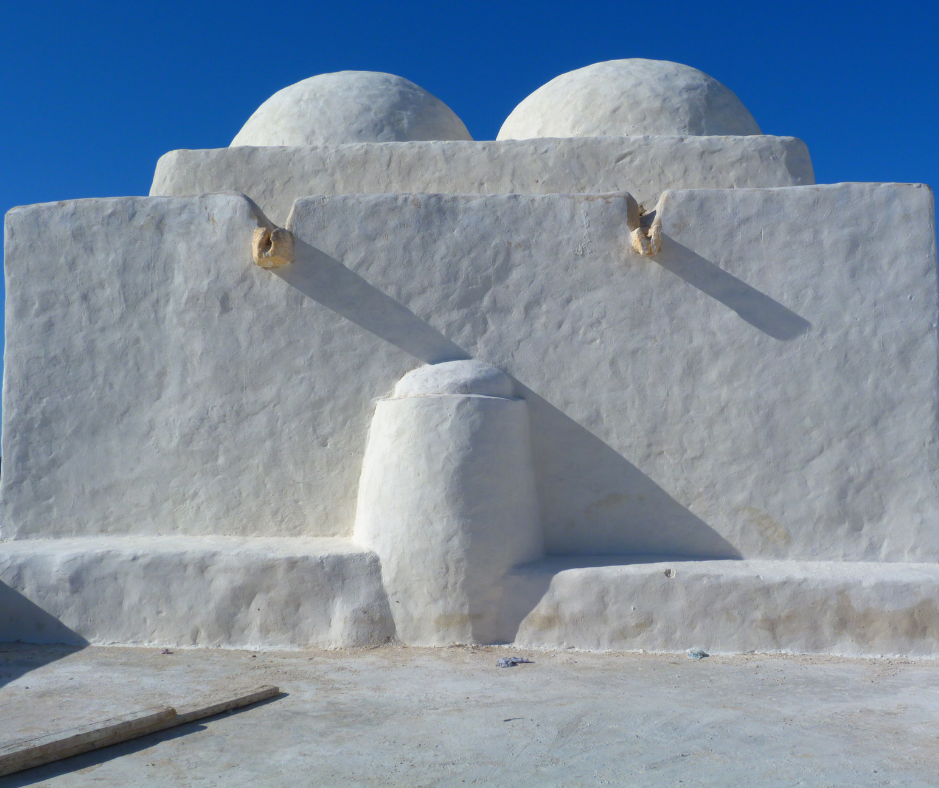
El Jem
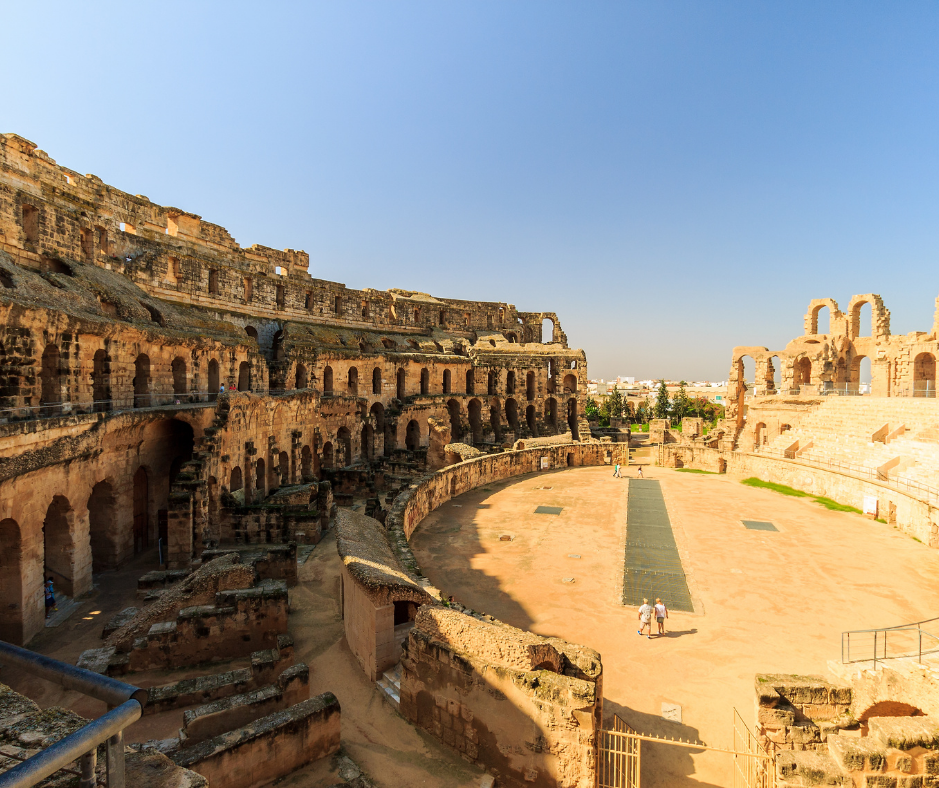
By far and away Tunisia’s most impressive attraction is the ancient Roman Amphitheatre of El Jem. The amphitheatre was built around 238 CE in what was once the Roman African province named Africa Proconsularis. It is one of the best-preserved Roman ruins in the world and is unique in Africa. The ancient venue was built for spectator events such as mock naval battles, wild animal hunts, public executions, chariot races and of course battles between Gladiators. The amphitheatre has starred on screen in popular culture in ‘Monty Python’s Life of Brian’ and has even featured in a Nike TV commercial.
Accompanying the archaeological site is the nearby El Djem Archaeological Museum. The museum contains finds from the El Jem site including sumptuous mosaic pavements, which portray a gory array of scenes, as well as flora and fauna and geometric patterns. The museum also displays Roman era statues, coins and ceramics unearthed from the site. At the rear of the museum, is the ‘House of Africa’, a Roman villa dated to 170 CE that was excavated in the 1990’s. It takes its name from two mosaics on the floors of the house. One features the goddess of Africa, the other the province of Africa, the only known Roman representation of the African continent.
The Land of Star Wars
Tunisia is where much of the original Star Wars movies were filmed, besides Mos Eisley Cantina on the island of Djerba, Tunisia is awash with not only ‘on location’ scenes from the movies but also sets which were left abandoned in the desert. The small town of Tataouine includes probably the most ‘on location’ scenes from the movies including the name which also inspired George Lucas and was slightly changed to Tatooine. You may recognise ‘Slave Quarter Row’ from ‘the Phantom Menace’ in the Ksar of Medenine and parts of Mos Espa in Ksar Ouled Soltane. You may also want to book your stay in the area at Sidi Idriss Hotel, which doubled as the home of Luke Skywalker, before taking a trip out to Tozeur to visit Sidi Bouhlel where C3PO and R2D2 wandered the Jundland wastes.
Tunisia is where much of the original Star Wars movies were filmed, besides Mos Eisley Cantina on the island of Djerba, Tunisia is awash with not only ‘on location’ scenes from the movies but also sets which were left abandoned in the desert. The small town of Tataouine includes probably the most ‘on location’ scenes from the movies including the name which also inspired George Lucas and was slightly changed to Tatooine. You may recognise ‘Slave Quarter Row’ from ‘the Phantom Menace’ in the Ksar of Medenine and parts of Mos Espa in Ksar Ouled Soltane. You may also want to book your stay in the area at Sidi Idriss Hotel, which doubled as the home of Luke Skywalker, before taking a trip out to Tozeur to visit Sidi Bouhlel where C3PO and R2D2 wandered the Jundland wastes.
This area is also home to the abandoned purpose-built sets for the movie franchise which lie abandoned in the desert near the town of Naftah. Here in the sea of sand dunes you will find the igloo of the Lars Family Homestead and more film sets from Mos Espa. You will need the assistance of a tour operator to get out here as it is very remote, and Lars Homestead can only be reached by 4×4 through the desert. On the bright side, once you are out here you should be completely alone and not have to share the site with anyone.
If you are a die-hard Star Wars fan and are considering visiting these sites, why not consider our ‘Sandpit Far, Far Away’ trip to Tunisia.
Kairouan
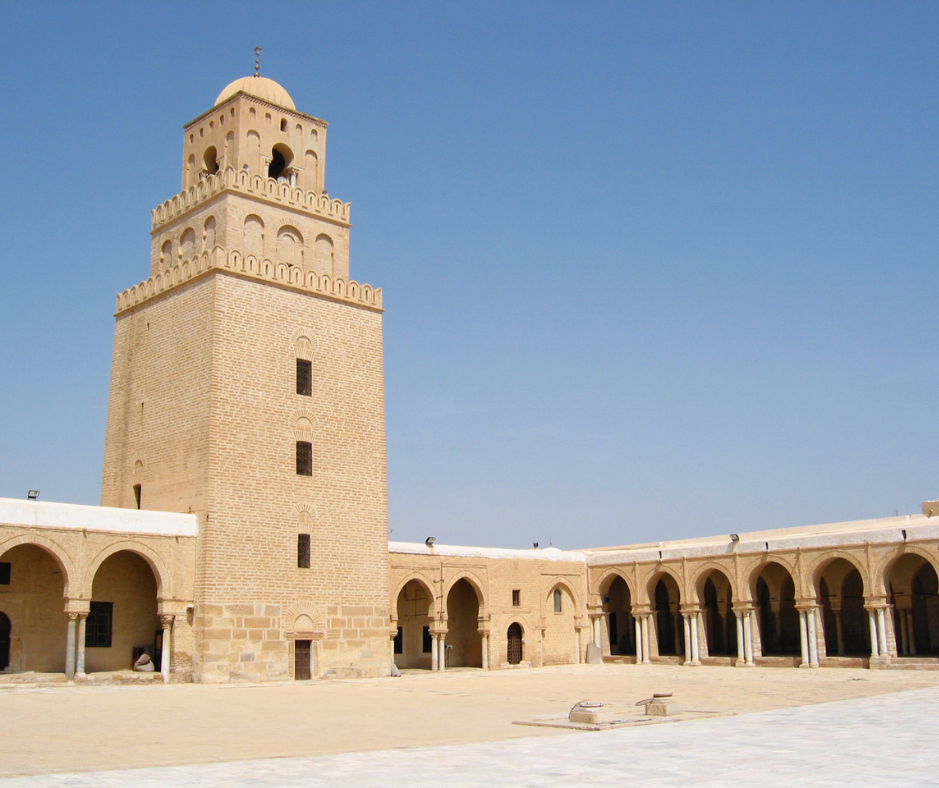
The city of Kariouan was founded by the Umayyads in around 670 CE and now the entire city is UNESCO World Heritage listed. The city was built far from the sea in an attempt to protect it from Berber attacks. Berbers are a native people of Tunisia and strongly resisted the Arab invasion. Before the arrival of the French in 1881, non-Muslims were forbidden from living in Kairouan, a Christian community had existed in the early 11th century alongside Jews who were among the original settlers of the city. Today Kairouan is a major centre of Qur’anic learning and is second only to Mecca, Medina and Jerusalem in importance.
Kairouan’s main sight is the Great Mosque of Kairouan, one of the largest and most impressive Islamic monuments in North Africa. Originally built at the same time as the foundation of the city, the mosque now occupies an area of over 9000 square metres and is one of the oldest places of worship in the Islamic world. The mosque of the ‘three gates’, is also worth a visit and is a notable example of beautiful Islamic architecture dating from 866 CE. The Mausoleum of Sidi Sahab, also called the ‘Mosque of the Barber’ dating to the 17th century should also not be missed. While mosques are going to be a key feature on any trip to Tunisia, it should be noted that most mosques will not admit non-Muslims and can only be viewed from the exterior.
If you’re into something a little on the strange side, you should check out the Aghlabid Basins. Dating back to the 9th century CE, the basins are located outside the city ramparts and are considered to be the most important hydraulic system in the Muslim world.
Sahara Camping
What could be more enticing than spending the night (or even a few nights) camping in the worlds largest desert. Even if pitching a tent in the sand isn’t your thing, Sahara camping in Tunisia offers something to suit all tastes including permanent tented camp sites which are all of the adventure with no inconvenience from nature. No matter which option you choose camping in the Sahara in Tunisia will make you feel remote, isolated and completely off the grid. Even the ‘glamp sites’ are located off road and can only be reached by 4×4. If you are looking for something a little more adventurous, such as wild camping, it is likely that you will be in for a long trek on the back of a camel.
Camping in the Sahara on a trip to Tunisia is a fantastically authentic experience, as this is something that the people of the nearby villages do for fun and not just for travellers. Excursions are usually run by the local villagers and nights are spent around the campfire with dinner prepared on site in a traditional way. Your local crew will often sing songs and play the gezbah (wooden, flute-like instrument) which will fit in perfectly with the desert setting. You will also be treated to a nightly display of the clearest sky and star gazing you’re ever likely to experience.
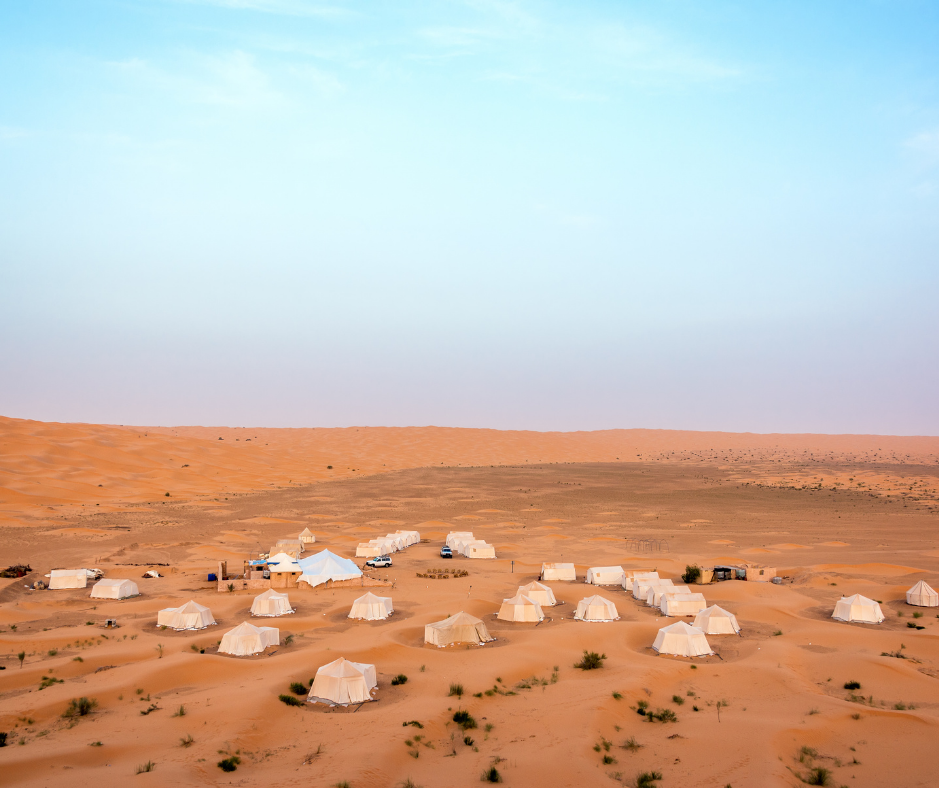
Madhia
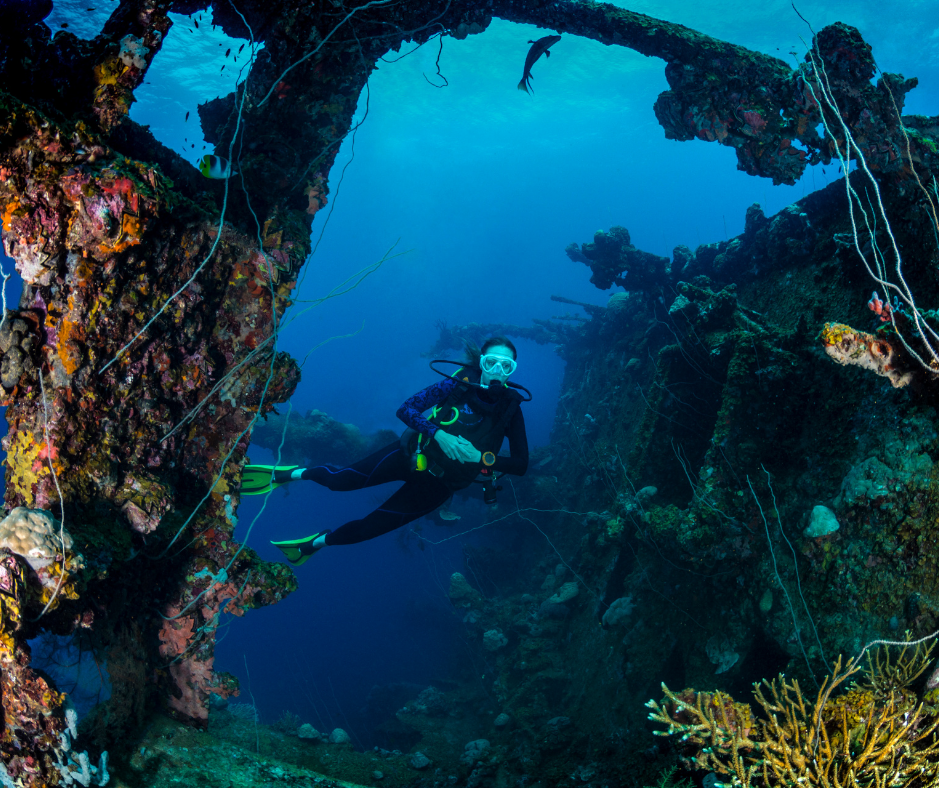
Mahdia is a small city located along Tunsia’s Mediterranean coast and is a popular place, along with the likes of Hammamet, Monastir and Sousse, for a ‘flop and drop’ trip to Tunisia. Unlike the bigger cities, Mahdia has kept a lot of its local charm and is perfect for those wanting a summer holiday, in a place that isn’t full of brash, foreign tourists. Apart from the resorts, you can also visit the old medina or ‘Skifa Kahla’ which was once the entrance to a forbidden citadel, strictly reserved for the court of the Fatamid Caliph. Today it is a souq which sells magnificent wedding garb and the streets still retain an air of nobility with their beautiful green doors, framed by carved stone.
Apart from Mahdia’s amazing history, it is also one of Tunisia’s number one places for Scuba diving. There are a number of wrecks from the second world war off Madhia’s coast including the Napoli, a relatively small Italian ship and another site called the Phantom wreck, this place in particular was undoubtedly the site significant naval and air action during the war. The jewel in Mahdia’s dive crown is undoubtedly the site of PLM 20, the remains of a cargo liner sunk by torpedo in 1942. The liner still contains crockery and bottles of beer and cider while reportedly also being home to an enormous grouper, whom the locals have named ‘Gigi’ who is apparently ‘Master of the Wreck.’
Kerkouane
Kerkouane is the site of an ancient Punic (same culture as Carthage) city located in the northeast of the country near Cape Bon. The city was abandoned after it’s sack by the Roman general Regulus, at some stage during the first Punic War (around 250 BCE). Unlike Carthage it was not rebuilt or resettled by the Romans. This has provided archaeologists with a valuable ‘time capsule’ and insight into the lives of the ancient Phoenician peoples of which very little remains, due to the Roman colonisation of North Africa in antiquity. This makes the site of Kerkouane unique among the many archaeological sites of Tunisia.
Despite the fact that Kerkouane is the only known Phoenicio-Punic town to have survived Roman conquest, still very little is known, not even its original name. Today visitors can see the remains of a double city wall with towers as well as the remains of the sewer system, public baths, kilns and port. The city is also home to several great houses, including the ‘House of the Sphinx’ and ‘House of the Clifftop’ some of which had private baths. The city has hardly any evidence of agriculture and made its living as a trading port.
Chenini
Back down in the south of Tunisia, near the troglodyte town of Matmata is the partially ruined Berber village of Chenini. Located on a hilltop, Chenini was a fortified granary or Ksar and was built in this way to protect it from raiding parties. Chenini’s oldest structures date to around the 12th century CE and some of the buildings are still used to store grain for the villagers living in the valley below. Chenini was another of Tunisia’s destinations that influenced the making of the Star Wars movie franchise. One of the moons of the home planet of Luke Sky Walker was named Chenini, by George Lucas.
Chenini is well worth a visit on any trip to Tunisia and not just for a quick stop to take a few pictures. A local initiative has meant that some of the old hollowed out cave dwellings of the village have now been transformed into a traditional Berber style hotel to encourage people to stay overnight and experience village life. An NGO has also been created to promote the social and economic well-being of the village and has instituted certain projects that encourage cultural exchange. Overnight visitors to Chenini can feel good about the fact that by visiting this special place in Tunisia they are participating in sustainable tourism and ensuring the survival of the unique place for years to come. There’s nothing better than making a positive impact through travel in our opinion.
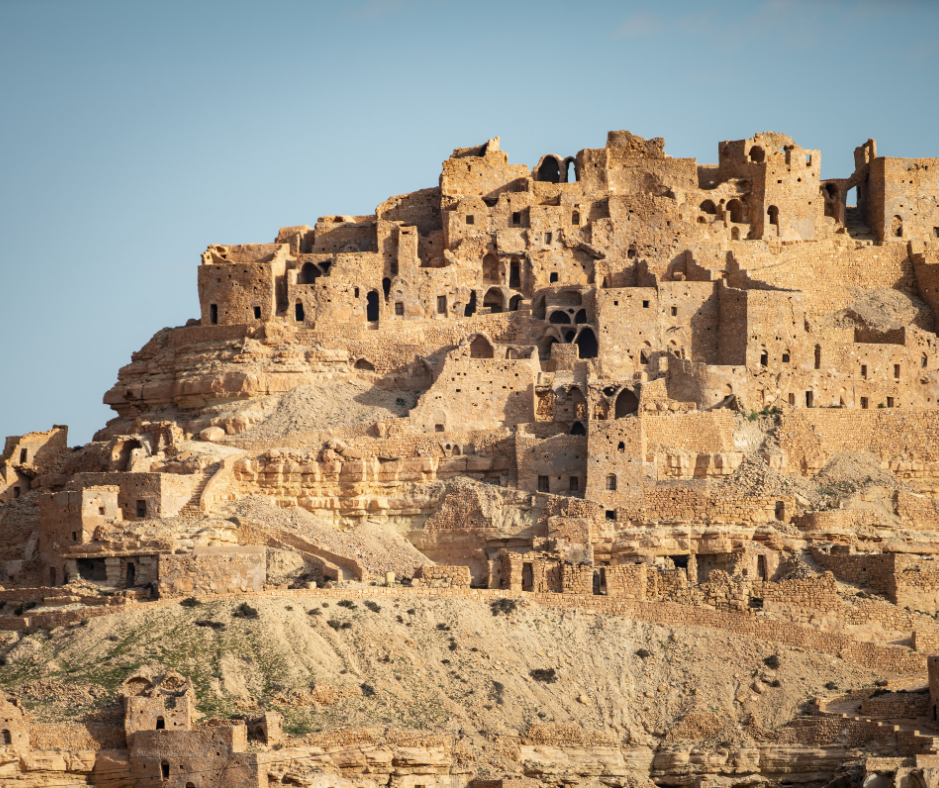
Sidi Bou Said
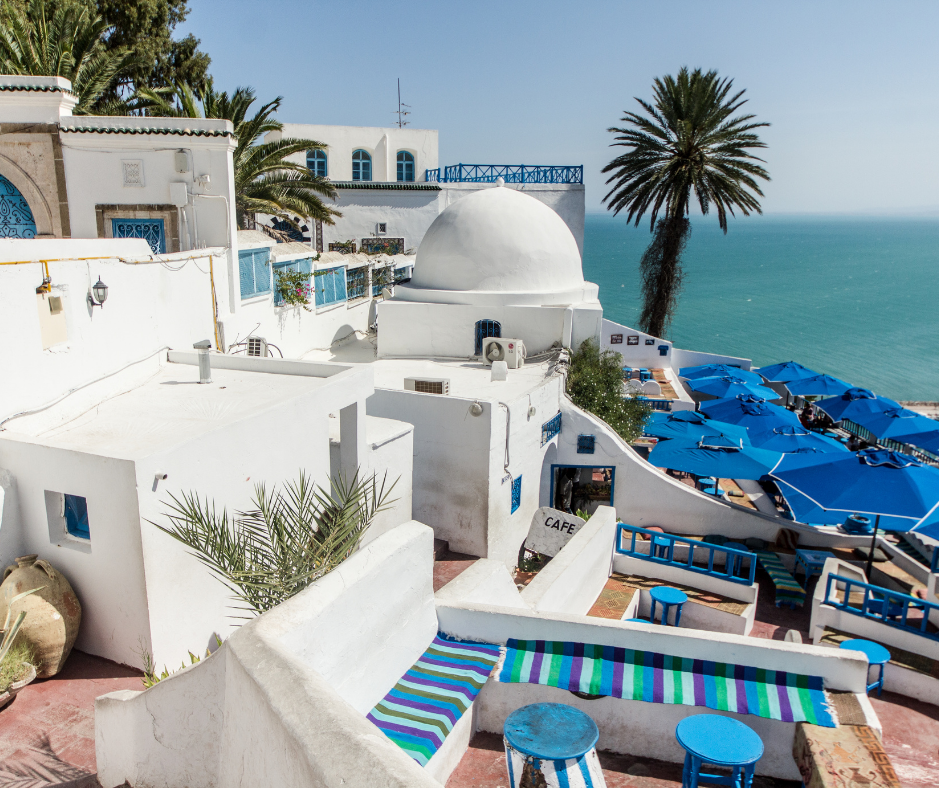
Located just outside the capital of Tunis, you could be forgiven for thinking you were walking the streets of Mykonos or some other idyllic Greek island as you stroll the streets of the chilled-out town of Sidi Bou Said. Home to whitewashed buildings, blue doors, local art galleries and quirkily shops Sidi Bou Said is a location not to be missed on your trip to Tunisia. This impossibly picturesque place is your chance to relax and kick back with a coffee and watch the world wander by. At least part of the relaxed ambiance of this town is due to the fact that like most small Greek island villages, cars are banned from its small streets, and you will find that larger hotel chains and resorts are absent.
Sidi Bou Said is a popular place to pick up genuine local handicrafts and produce, especially the ceramics for which Tunisia is famous. Spend a day coffee shop hopping through the traditional Moorish coffee houses, we recommend Café des Nattes followed by a walk up to the Mausoleum of Abu Said el Beji for sunset over incomparable views of the Gulf of Tunis and the ancient city of Carthage. Apart from wandering and drinking fabulous coffee, make sure Palace Dar Nejma Ezzahra is also on your list. This old residence from the early 20th century provides the best examples of Tunisian traditional architecture, gardens and amazing views across the Mediterranean.
To find out more about places to visit or for our trips to Tunisia drop us a line at info@invertedatlas.com or call +61 (2) 7299 1926.


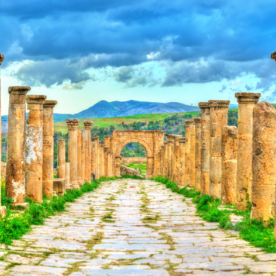
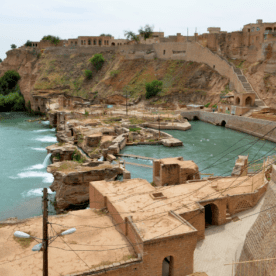


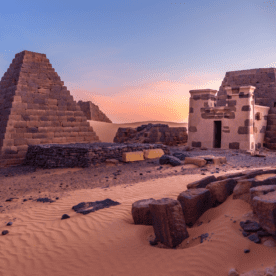

Leave a Reply